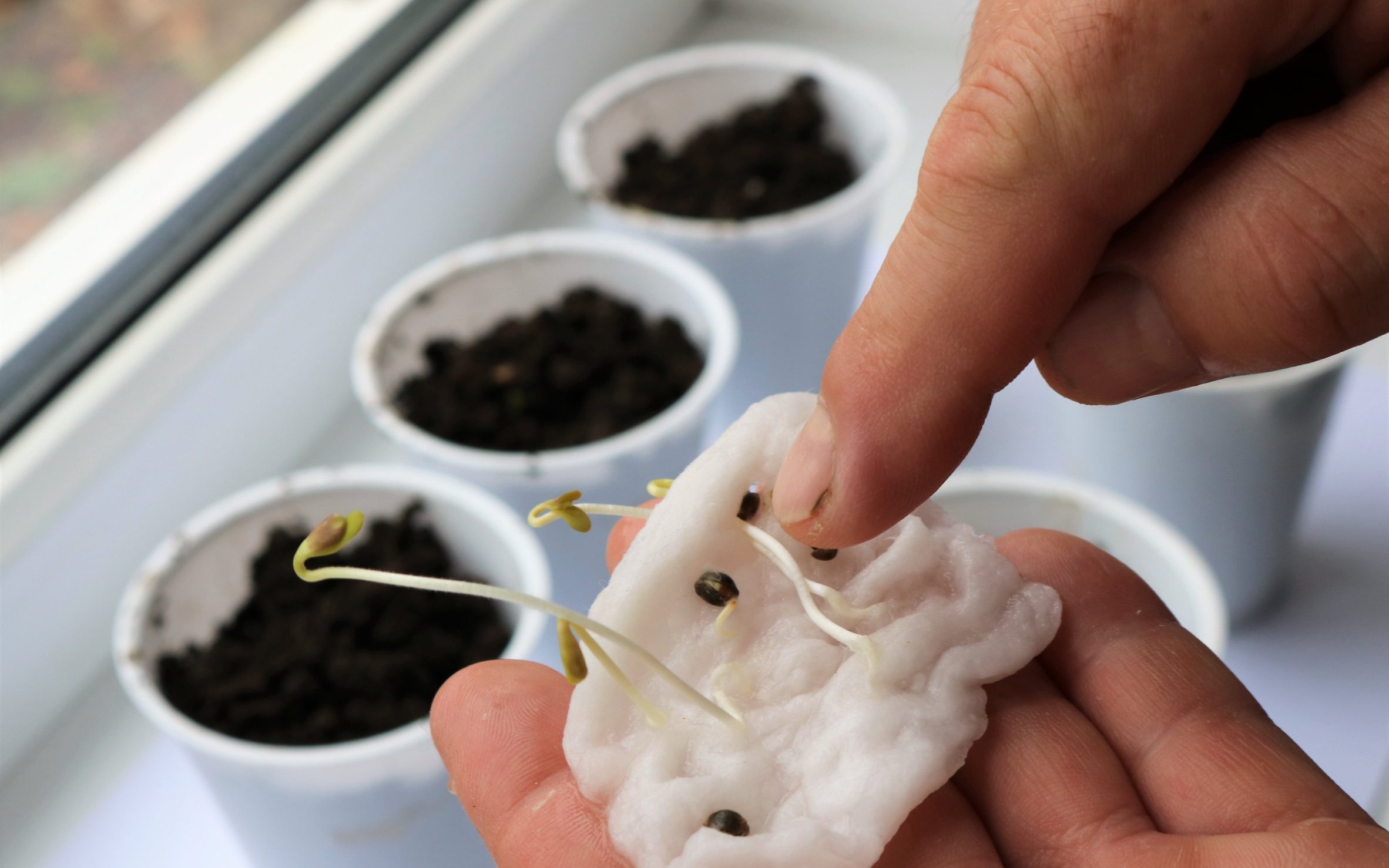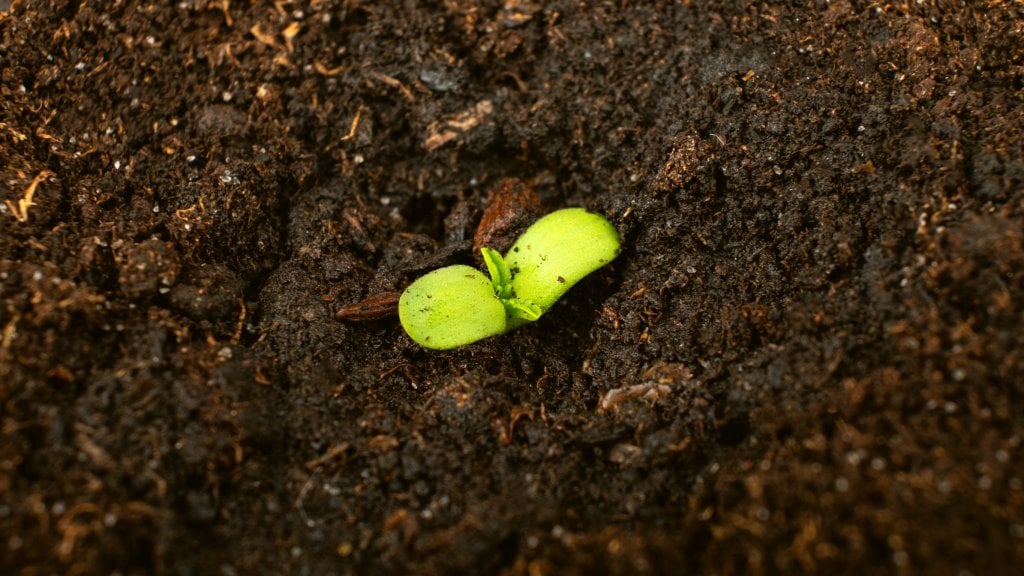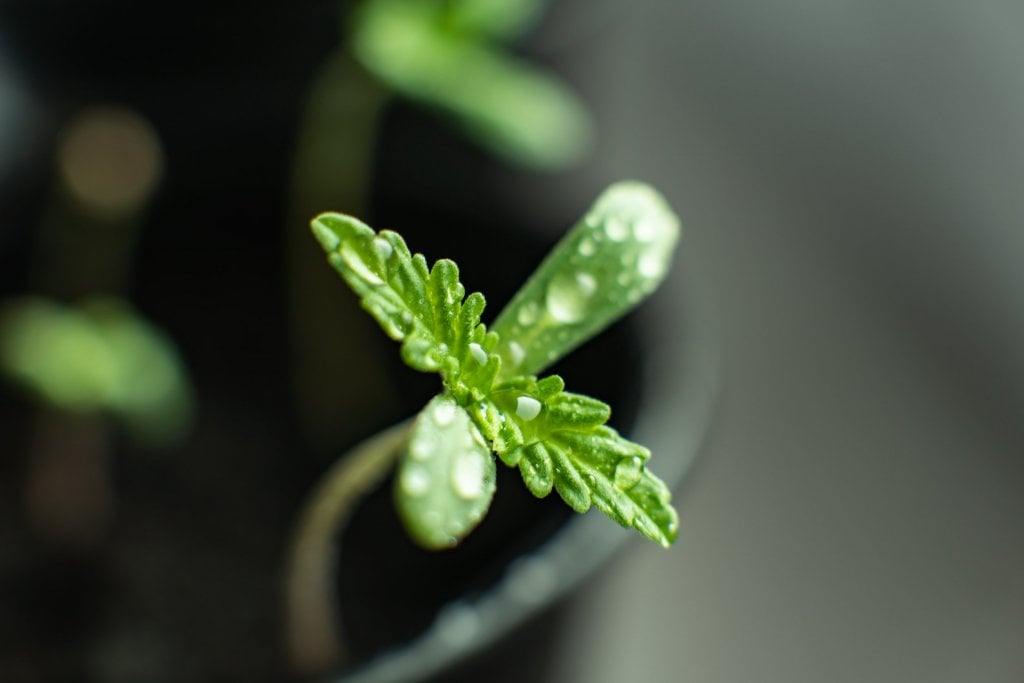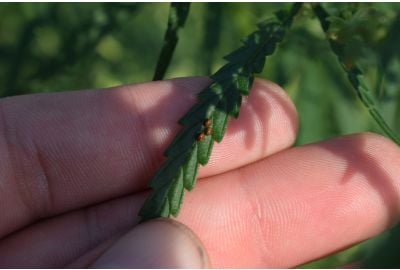How To Fix Cannabis Seedling Problems
After successfully sprouting your marijuana seeds, they enter the seedling stage. While exciting for all growers, your cannabis is extremely fragile during this phase. Seedling problems can easily occur without proper care and attention, meaning you need to start over.
Whether you see your seedlings dying after sprouting or showing signs of stunted growth, it’s essential you know what to look out for. Once you recognize what went wrong, you can fix the problem and avoid it in the future.
Not sure where to start? Don’t worry; we’re here to help.
Read on for the lowdown on cannabis seedling problems, how to spot them, and expert tips on remedying the issues. By the time we’re done, look forward to stronger seedlings and a more positive outlook on your crop’s life—and yields.
9 cannabis seedling problems, causes, and solutions
There are a lot of possible marijuana seedling problems that can pop up on your cannabis growing journey. Below, we share the most common issues among gardeners when caring for their plants in this early stage.
Once you know the seedling problem you’re dealing with, use our handy solutions to get your crop back on track.

1. Seeds not germinating
The first stage of your cannabis crop’s life is germination. This involves you providing the ideal environment (dry and humid) for your seed to pop a taproot. There’s no seedling phase without this step. Around 90% of all marijuana seeds should sprout, but it’s a cause for concern if they don't.
Cause
Why won’t my seeds germinate? There are a few reasons. Soaking seeds for too long in water causes them to rot, rendering them useless. Being kept in storage for more than six months also decreases the germination success rate. Dry soil limits the moisture your seeds get and is another reason they don’t pop.
Solution
If you plant your seeds directly into the soil for germination, soak them in water for 30 minutes to soften the shell and start moisture absorption. Ensure the soil mix is slightly damp when you sow and keep it moist until the seeds sprout. Even if a seed is only dry for a few hours, it can hinder its development and cause other seedling problems down the line.
2. Seedlings dying after sprouting
Watching your seedlings dying after sprouting is one of the most frustrating experiences for cannabis gardeners. Growers also know this issue as “damping off,” and it’s commonly caused by disease in your seedlings.
The sprouts tend to die so fast there’s no time to remedy the situation once it happens. You can do as much as possible to stop it from occurring in the first place, though.
Cause
Are you asking yourself, “why do my seedlings keep dying?” It’s likely one of the following causes:
- Wrong soil type
- Unsterile equipment
- Lack of ventilation
- Soggy soil
- Watering from the top of the seedlings
Solution
Despite being an impossible seedling problem to rectify once it takes hold, do everything in your power to stop it from happening in the first place. To give your little taproots the best start, ensure you implement these tips:
- To grow seeds, get a quality seed starting medium or peat pellets. Never reuse any soil or pellets.
- Disinfect every piece of equipment that will touch your seeds and seedlings. We recommend a solution of one part bleach to nine parts water.
- Set up an oscillating fan to ensure the area is well ventilated when growing indoors.
- Soil that’s too wet easily causes seedling problems. A soil moisture gauge tells you when to water.
- Always water your seedlings from the bottom. They’ll absorb the water from the soil—drain any liquid that doesn’t absorb after 30 minutes.
3. My seedlings stopped growing
Before you shout, “my seedlings stopped growing,” bear in mind that certain seeds and strains grow a lot slower than others. Some seedlings develop true leaves in as little as a week, and others take three.
Cause
If you’re sure your sprouts have slowed down or stopped growing altogether, it could be that the room temperature is too cold. Seedling problems happen more often when temps go below 65°F. Lack of proper light exposure also inflames this issue.
Inadequate nutrients or not properly watering are two other reasons for a seedling not growing. These two go hand in hand, and providing a solution helps breathe new life into your taproots.
Solution
To avoid your cannabis seedlings not growing and bring them back to the land of the living, check the following:
- Keep room temperatures above 65°F. Use a warm space heater or heat mat to meet your seedling’s needs if you can't.
- Sprouts love being indoors with an excellent grow light setup. Invest in quality lamps instead of relying on sunlight from a window to prevent seedling stunted growth.
- As soon as seedlings develop true leaves, feed them organic fertilizer. Liquid compost tea or a special seedling mix gives them all the right cannabis nutrients they need to thrive.
- An optimal watering schedule is vital to avoid seedling problems. Too much or too little both have a detrimental effect. Consider buying a moisture gauge to know when to water.
4. Seedlings sprouting yellow or turning white
As soon as you spot seedlings sprouting yellow, you know something’s wrong. Many cannabis deficiencies show themselves by discoloration in the foliage, similar to the sprouts.

When the foliage begins to develop, you may also notice seedling leaves turning white. Whether you see yellow, white, or even brown spots, it’s time to act fast for plants to recover well. If damage is too severe, it may be too late.
Cause
A variety of factors cause seedling’s leaves turning yellow or other colors, including:
- Overwatered seedlings
- Fertilizer burn
- Sunburn
- Using the wrong type of soil
Solution
When you notice affected leaves, implement the following solutions fast. It could mean the difference between your sprouts thriving or dying.
- Use a water gauge to add moisture to your seedlings. Drain any excess water from the setup to avoid rotting seedling problems.
- Use organic fertilizers rather than the chemical kind. The latter burns the delicate taproots before they have a chance to thrive.
- As soon as you spot yellow leaves on seedlings, move them out of the sun. Severe sunburn usually kills off sprouts.
- Ensure you use a quality seedling soil mix for planting inside.
5. Seedling sprouted with no leaves
As taproots develop, you expect to see the first pair of leaves in a week. If a seedling sprouted with no leaves, don’t worry right away. It can take up to three weeks for true foliage to form—and it usually does. Any longer, it’s time to do something.
Cause
Most crops will eventually develop their first leaves, even if it takes a little longer. If you notice slow development and no foliage, a few seedling problems may be the cause:
- A lack of nitrogen in the soil means less energy for the taproot to develop.
- Cold temperatures shock seedlings, causing them to grow slowly and produce leaves later than usual.
- No leaves can mean they broke off underground, or a little critter enjoyed them for lunch before they sprouted.
Solution
Give your taproots a special fertilizer mix for this stage. Ready-made plant food contains everything they need during this delicate phase to promote optimal growth. If you maintain the right temperatures (65–75°F), seedling problems are less likely.
If the leaves do break or get eaten before sprouting, don’t worry. New sets will appear, and your plants will go on to thrive.
6. Seedling leaves curling up
Seedling leaves curling up or wilting is a severe sign that something’s wrong. Most issues that cause this problem kill off your crops fast, so take action as soon as you see symptoms.
Cause
There are three main causes for this seedling problem. Webbing between the leaves and joints or little bugs on the foliage can mean spider mites. Alternatively, underwatering or chemical fertilizer burn can be the culprit. Severely dehydrated seedlings become weak, and feeding them chemicals does a lot of damage.
Solution
Fix the three causes of your seedlings wilting and curling up by implementing these solutions:
- Spider mites can quickly kill seedlings. Immediately raise the humidity level by misting your sprouts. Neem oil and insecticidal soap also do a grand job of getting rid of these critters.
- Never let the soil completely dry out. Stick your finger an inch into the earth—if it’s dry, water the seedlings right away.
- Use organic fertilizers to nourish the taproots properly. Some great options include compost tea and liquid fish and seaweed.
7. Seedling falling over
Seeing a seedling falling over is worrying, and you may think it’s about to die—but this situation is easy to remedy.
Cause
Seedlings wilting and falling over is usually due to insufficient lighting or the wrong temperatures. If the lamps are too far away from your taproots, they find it hard to develop and begin to droop. Equally, when temperatures are too hot, the growing medium becomes dry, and seedlings get dehydrated and wilt, eventually falling over.
Solution
To avoid seedling problems due to light, keep your lamps about 2 inches above the taproots. If they still show no sign of getting better, add another light source. Seedlings need roughly 12–16 hours of lighting a day. If you have enough, your sprouts will revive.
If your seedlings overheat, they’ll also wilt and fall over. Ensure the temperature is between 65–75°F and the soil is always damp when putting your finger an inch-deep inside. Keep enough space between taproots to promote airflow and maintain a cooler environment.
8. Bugs flying around seedlings
If you’ve grown marijuana before, you’ve probably had experience with cannabis pests. Fungus gnats lay eggs in soil and cause seedling problems if left unattended. A few flying around your sprouts won’t do much harm, but if you see lots of them, it’s time to take action.
Cause
Why do these little pests love your weed so much? It’s more to do with the soil being too wet. These little gnats adore moisture and humidity, so watering weed too much attracts more to the party.
Solution
To eliminate as many bugs as possible, hang yellow sticky traps around your seedlings. Most will glue to the tape, and your seedlings can thrive again.
9. Mold in seed trays
Mold and mildew are two frequent issues when cultivating cannabis, and they’re also common cannabis seedling problems. The fungus isn’t usually the single cause of dying taproots, but it’s a symptom of more severe complications.
Cause
Mold usually appears on seedlings when they suffer from overwatering, overcrowding, and lack of air circulation. All three tie in with one another, and if you're guilty of one, you’re likely guilty of all three.
Solution
To avoid mold altogether, implement an optimal setup from the outset. If it’s too late and the fungus is already taking hold, consider these tips:
- Overwatered seedlings are a common cause of many of the problems we’ve mentioned. The top layer of soil should dry out between feedings.
- When using pellets for seedlings, ensure there’s only one in each cell. If they outgrow the seed tray, carefully move them to pots—plants are extremely delicate during the cannabis seedling stage.
- Implement sufficient airflow throughout the taproot’s setup. Ventilation also helps to dry out overwatered soil.
Tips to avoid marijuana seedling problems and grow healthy cannabis plants
By now, you’ve seen various causes of seedling problems. Issues at this early stage of development also mean a higher risk of more serious conditions as your plants grow.

What can you do?
Prevent the problems from arising in the first place. Providing the right environment and taking care of your crops from germination gives you healthy plants that provide large yields. Check out our top tips for growing cannabis:
- Maintain hygiene. Some seedling problems or a failure to germinate stem from contamination. Disinfect all equipment you use and ensure the soil mix is clean and healthy before planting.
- Provide the right nutrients. Cannabis needs different nutes at each stage of development, so do your homework to get it right. During the seedling phase, crops require more nitrogen.
- Water plants correctly. Overwatered seedlings are the root of many problems mentioned above. Too little moisture causes dehydration and eventual death. Invest in a water gauge to know when plants are thirsty. Remember, some strains need more water than others.
- Keep the right temperature levels. For seedlings to thrive, ensure your environment is between 65–75°F. Anything above or below is likely to cause seedling problems. Ensure sufficient ventilation if you live somewhere hot or provide heat pads if you’re in a cold place.
- Consider the lighting. When your seedlings are growing, your lamps need to be about 2 inches above them. They need 12–16 hours of light to thrive. As cannabis crops develop, their lighting needs to change. Adjust the hours accordingly to get the most from your plants.
Bring your seedlings back to life
Whether you see a seedling turning yellow or drooping and dying, these problems are stressful. Luckily, most issues are fixable by providing the optimal environment for your taproots. Use our expert tips for breathing new life into your seedlings and put them on the right track for a bumper harvest of juicy buds.
Remember to provide the right amount of nutrients and water while always being hygienic. Don’t let the environment get too hot, and give your seedlings all the light they need. With these aspects done right, cannabis seedling problems become a thing of the past.
Have we fixed your seedling problems? Share this article with your friends to help them too. If you want to know more about growing cannabis, check out our blog full of other helpful articles. Industry experts weigh in on all aspects of marijuana gardening.
If you enjoy chatting with like-minded growers and sharing tips and tricks, join our friendly community. Thousands of other 420 fans like you are looking to compare what did and didn’t work for them.
